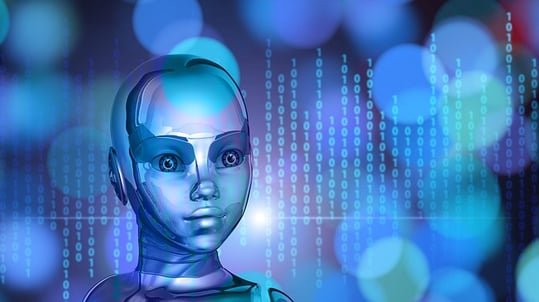 For us at Red Javelin, 2018 was the year of artificial intelligence (AI).
For us at Red Javelin, 2018 was the year of artificial intelligence (AI).
Almost all of our technology clients have begun to offer AI-based products (or put AI on a product road map). As marketers, it has been a challenge to distill their offerings into concrete business value and develop educational materials with messages that resonate with prospects and customers.
As in all emerging and fragmented markets, communicating the business value of new technology as well as educating prospects on how the technology works is challenging. Terminology can mean different things to different people.
And the term AI definitely means different things to different people. Many assume that AI automatically means robotics, but robotics is only one use case for AI-based technology. There are literally thousands of companies offering AI-based technology and solutions. Market watchers have begun segmenting and sub-segmenting the market but for our purposes there are too many segments and it is still too complex.
We have developed our own model to categorize and put context around AI technology/solutions. We use the term AI as a catchall term because typically AI-based solutions use a number of related technologies like machine learning and visualization.
It is a very simple model, maybe too simple, but it helps our team as well as our clients understand where they fit in the overall market.
Four Simple AI Categories
We have identified four categories: Data Correlation, Voice, Vision, and Smart Robots. Let’s take a closer look.
- Data Correlation – One of the things AI and machine learning are great at is correlating massive amounts of data and then serving up that correlated data into a specific application. Finding the relationships in huge amounts of data is not a simple task but AI has opened up infinite application possibilities such as identifying market trends, providing holistic healthcare, discovering security risks, as well as many other daily business applications. For example, take AIOps – Artificial Intelligence for IT Operations. AIOps is poised to completely disrupt IT operations, as we know it today. AIOps a group of technologies that include data ingestion, auto discovery, machine learning, visualization, automation, and correlation of data across physical and virtual computing environments. It is able to pinpoint root cause in seconds instead of hours of manual data correlation across data silos. It helps keep networks and computing environments running. Although it is in the early stages, AIOps improves the speed and efficiency of IT operations and promises to replace a broad range of manual IT operations processes and tasks.
- Voice – Speech recognition has been around for a long time however, the technology is finally mature enough to be incredibly useful. Voice assistants such as Siri and Alexa are examples of AI-based voice technology. New applications are using this technology for voice activated search, hands free mobile applications, and vertical applications such senior care giving.
- Vision – Machine vision has been giving robotics and machines “eyes” for years. Today, AI-based machine vision encompasses various types of image processing that are used for many applications. For example, aerial images of farmland are quickly analyzed for water and fertilizer needs, images captured by drones identify infrastructure abnormalities in power grids, wind farms, roadways and bridges, and medical images can quickly be compared to baseline images to detect abnormalities.
- Smart Robots – This is what many people think of when they think of artificial intelligence. These robots can learn and act autonomously. This category is for traditional robotics but also self-driving cars and is the most controversial category of AI. Stephen Hawking, Elon Musk, Bill Gates, and many other big names in science and technology have recently expressed concern about the risks posed by AI and what it could mean for humanity.
There is an excellent book called The Fourth Age – Smart Robots, Conscious Computers, and the Future of Humanity written by Byron Reese, CEO and Publisher at Gigaom. I received this book last summer and to be honest I was prepared to not to like it, as I looked at it stacked up with my mind-numbing beach reads. At this point, I was leaving on vacation and all I wanted to do is sit on the beach and empty my mind.
However, once I picked it up, it drew me in and I could not put it down. I found Reese’s approach fascinating. Instead of the typical techno-babble tutorial, this book is a thought provoking read that does not focus the technology itself but rather on how to think about these emerging technologies and how they are going to change the world forever. Reese does an outstanding job at providing a framework to help you understand your perceptions as well as understand other people’s perceptions about the inevitable changes that are coming and how these technologies may ultimately impact humanity.
Surprisingly, instead of emptying my mind, this book forced me to think out of the box and it actually helped provide clarity to some of the challenges I had been experiencing with my AI-focused clients. It is a worthy read.
The Evolution Has Just Begun
The term AI implies many things but as technology vendors need to be more specific than just using the term AI and provide context for your solution. If you add any of these terms – data correlation, vision, voice, or smart robotics – you have immediately provided context for your audience.
Although we are just at the infancy of AI, it will become prevalent throughout society. The terminology surrounding AI is confusing however if you strive to keep it simple, you will quickly develop a reputation as a thought leader.




